Abstract
Reinforcement of an instrumental response results not from a special kind of response consequence known as a reinforcer, but from a special kind of schedule known as a response-deprivation schedule. Under the requirements of a response-deprivation schedule, the baseline rate of the instrumental response permits less than the baseline rate of the contingent response. Because reinforcement occurs only if the schedule deprives the organism of the contingent response, reinforcement cannot result from any intrinsic property of the contingent response or any property relative to the instrumental response. Two typical effects of response-deprivation schedules—facilitation of the instrumental response and suppression of the contingent response—are discussed in terms of economic concepts and models of instrumental performance. It is suggested that response deprivation makes the contingent response function as an economic good, the instrumental response as currency.
Keywords: reinforcement, response deprivation, behavioral economics, facilitation, suppression, performance models
Full text
PDF

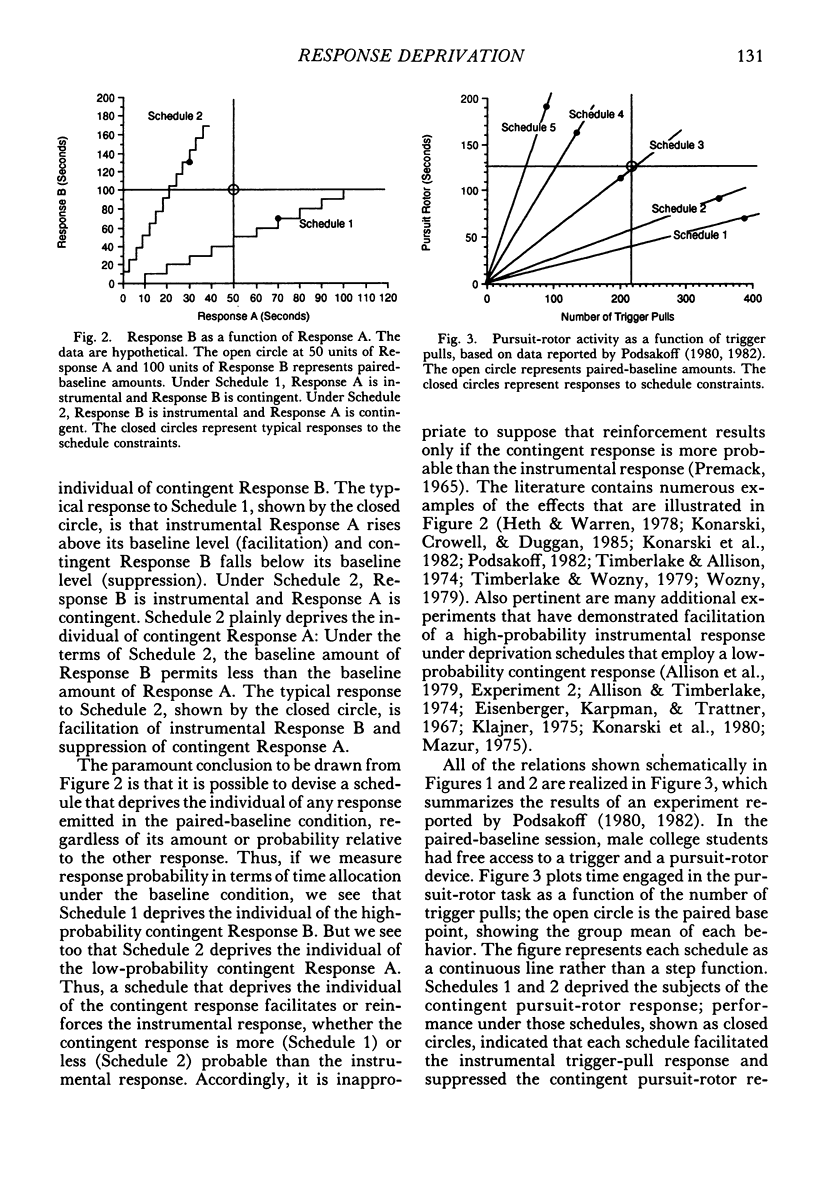

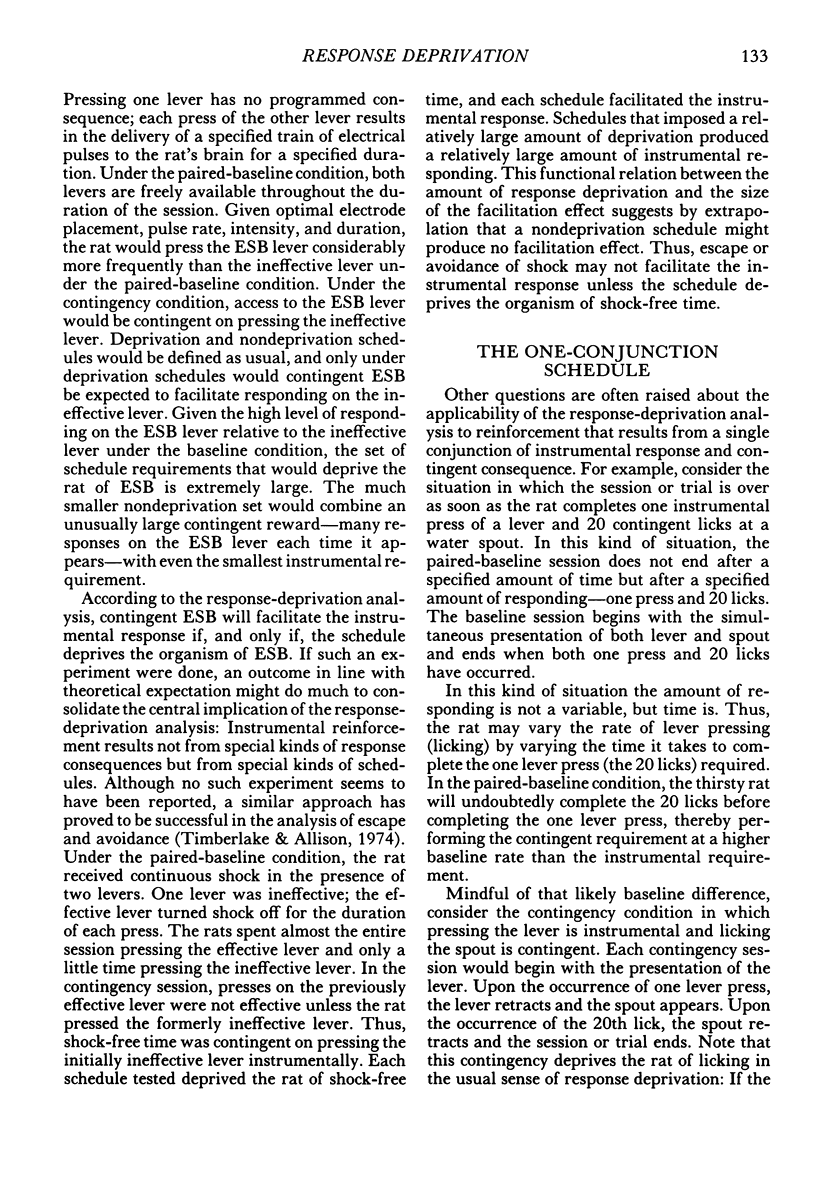
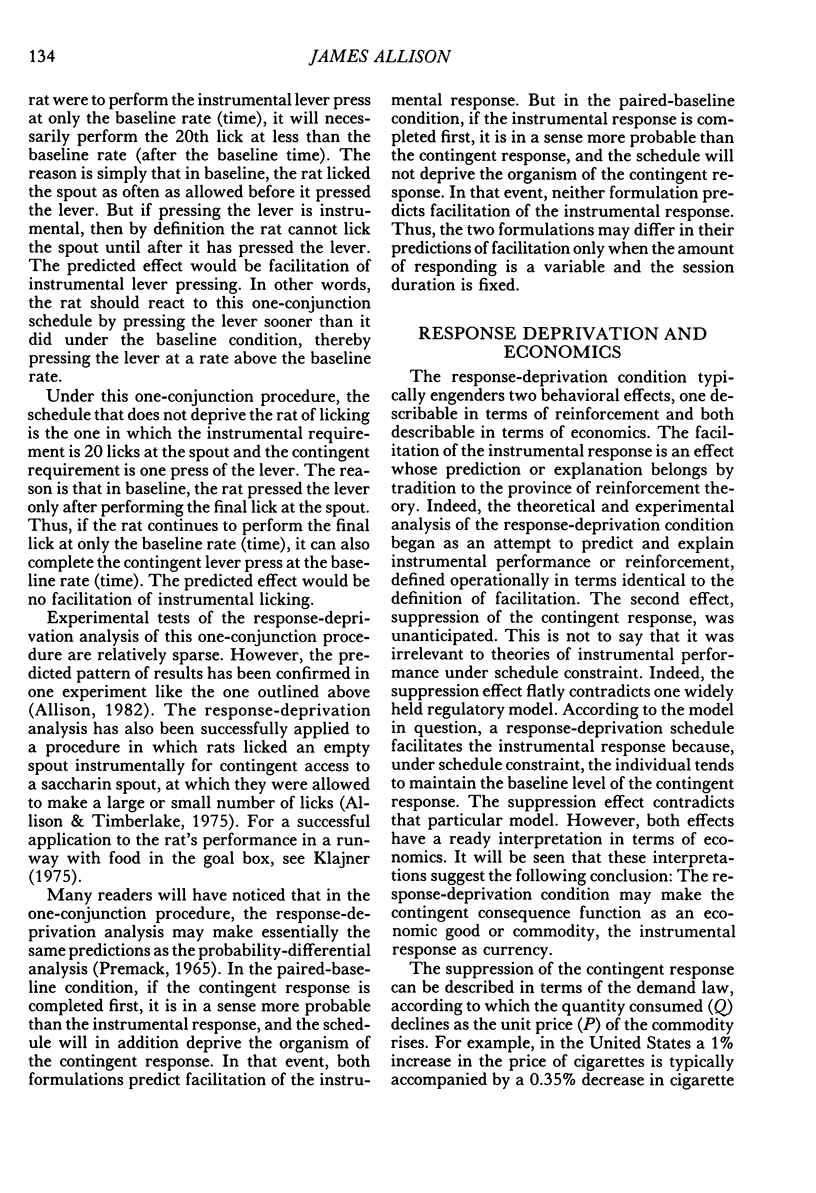
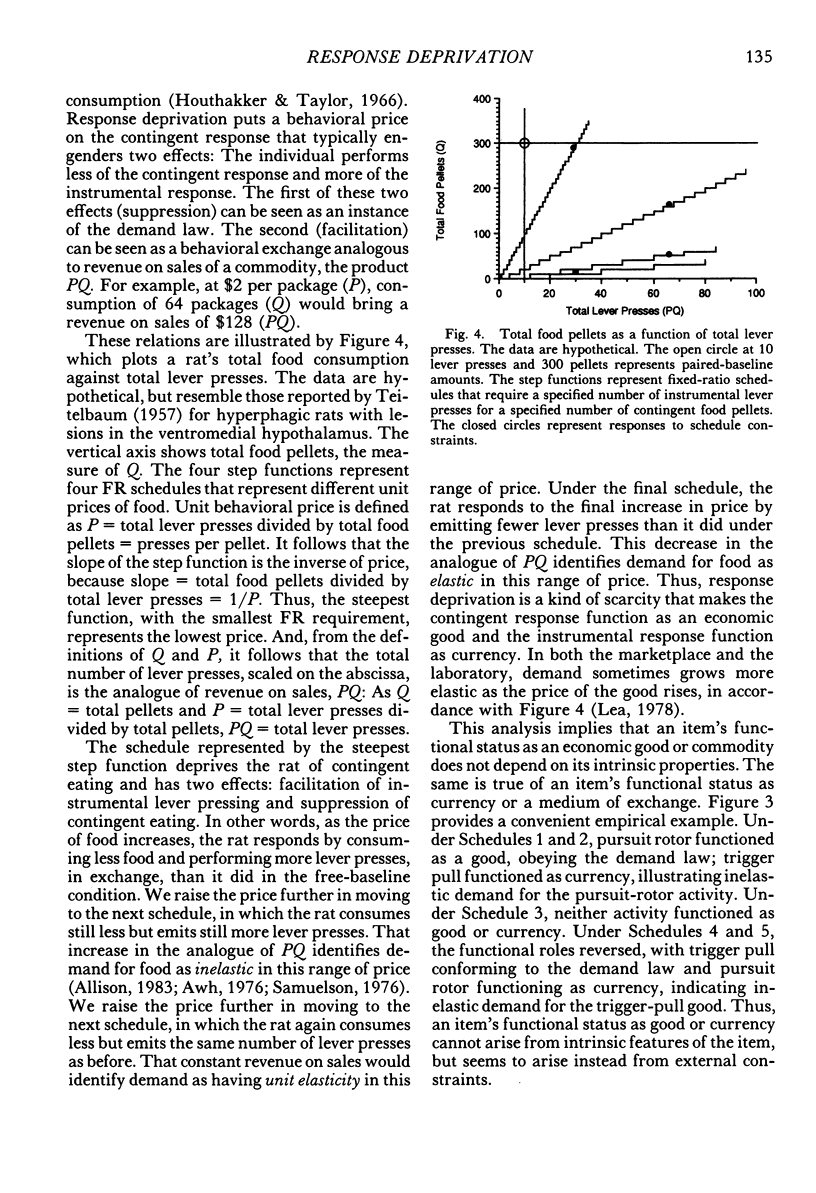
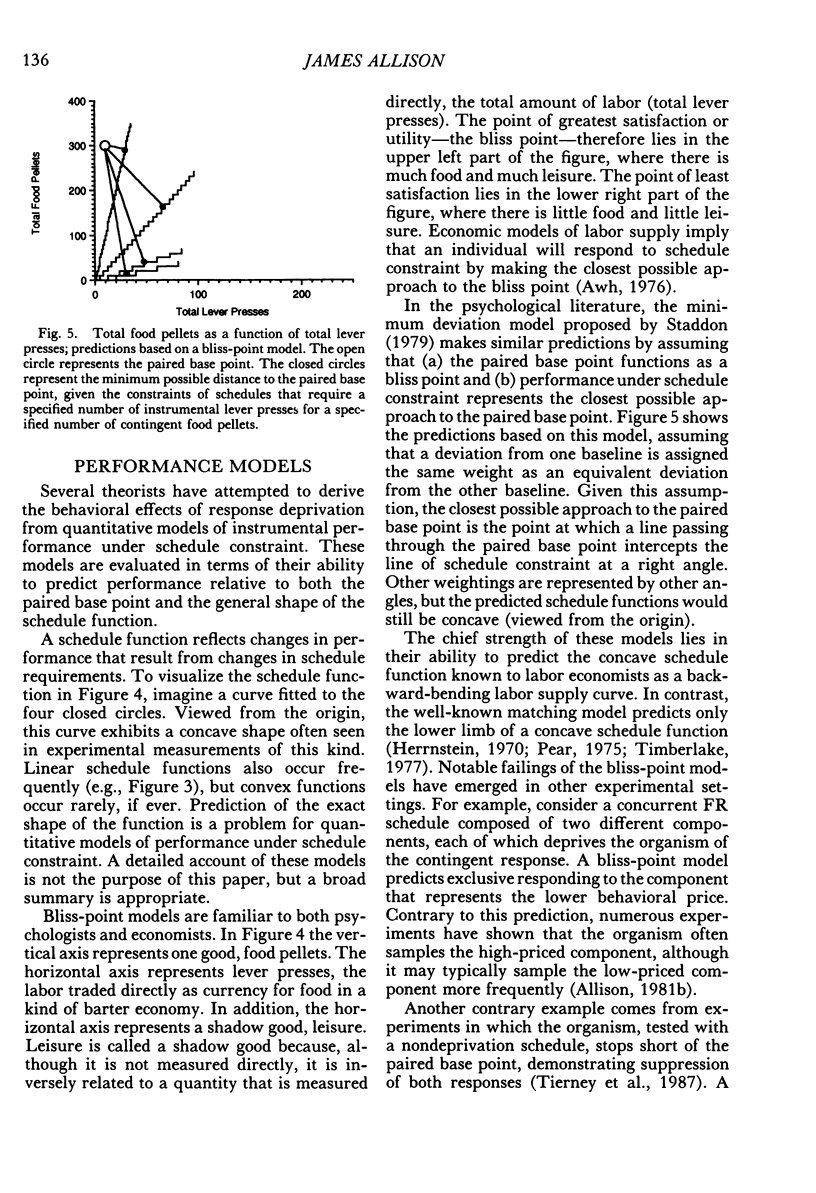
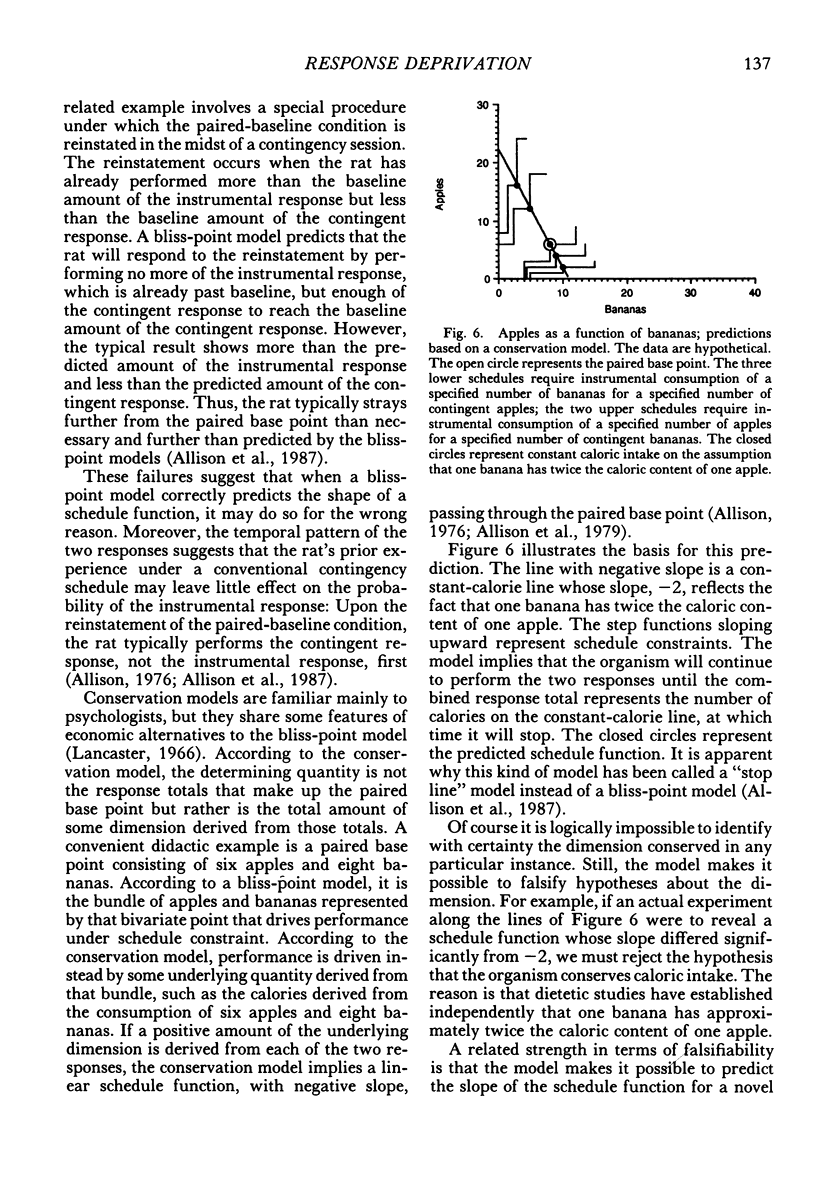
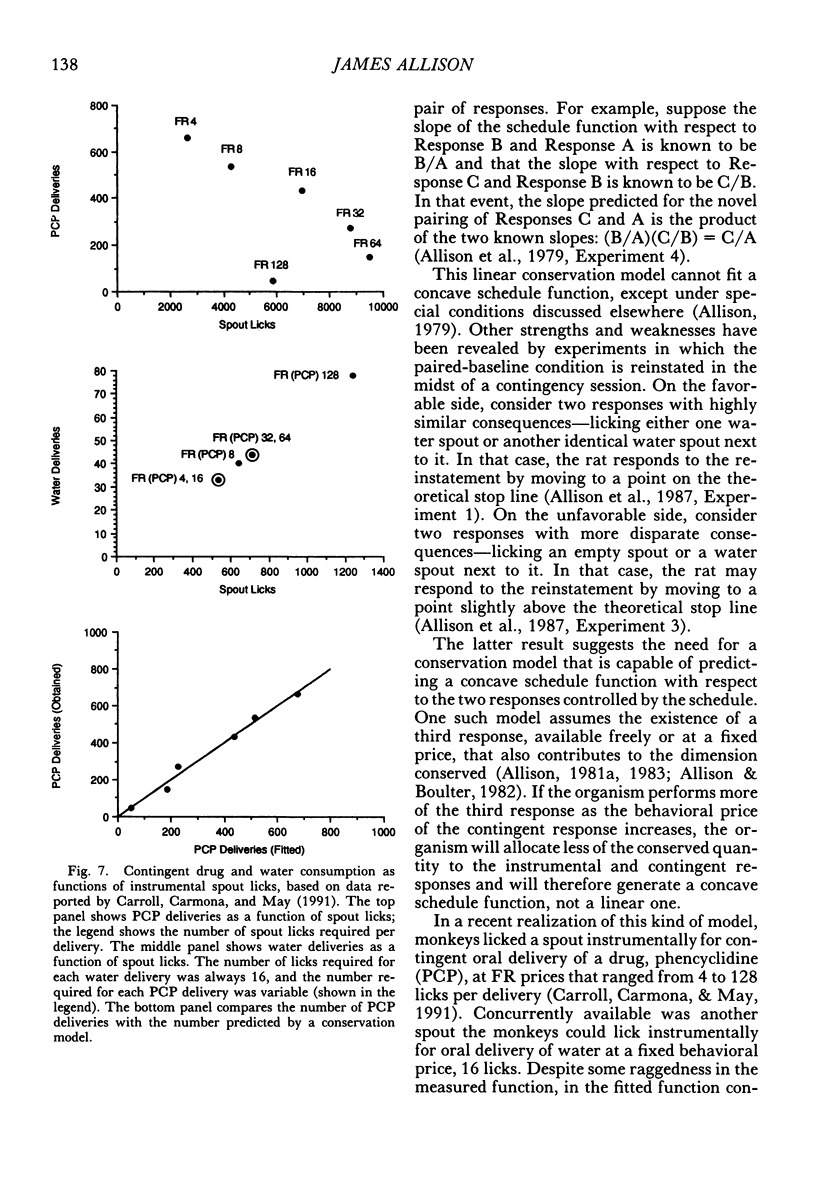
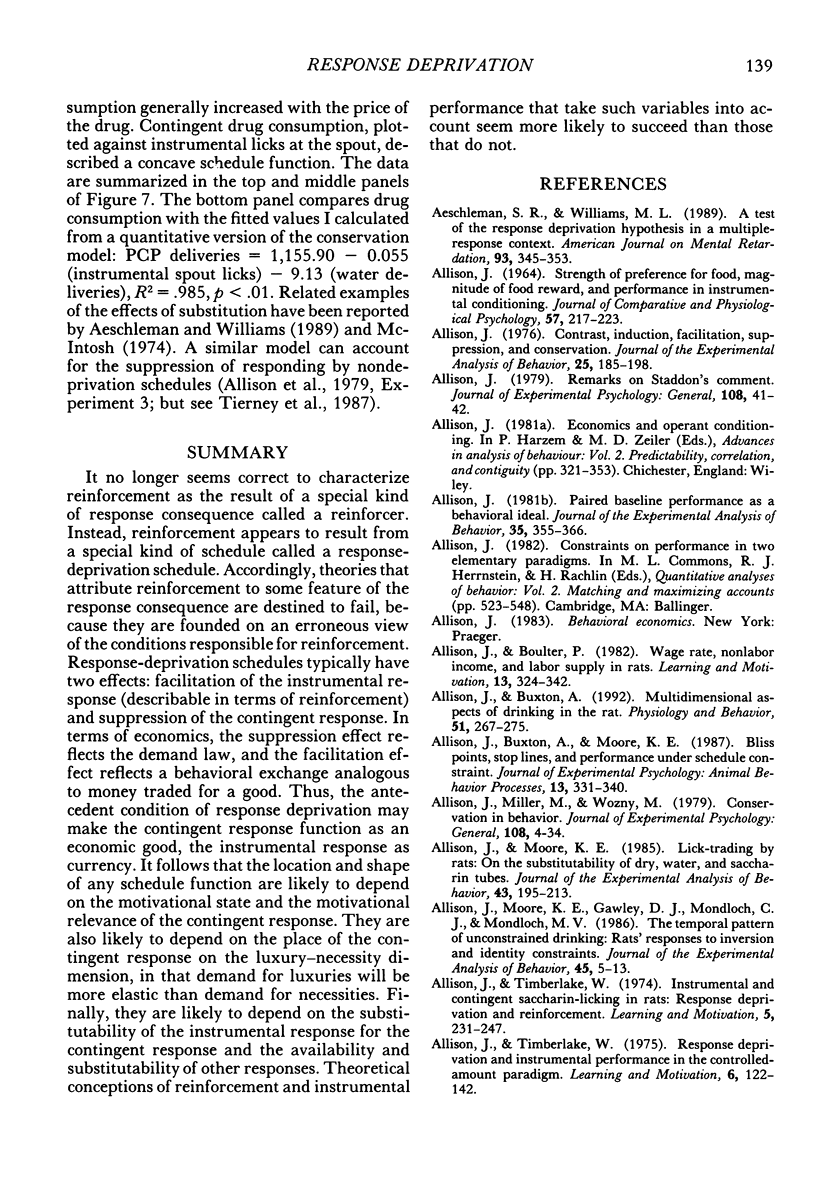
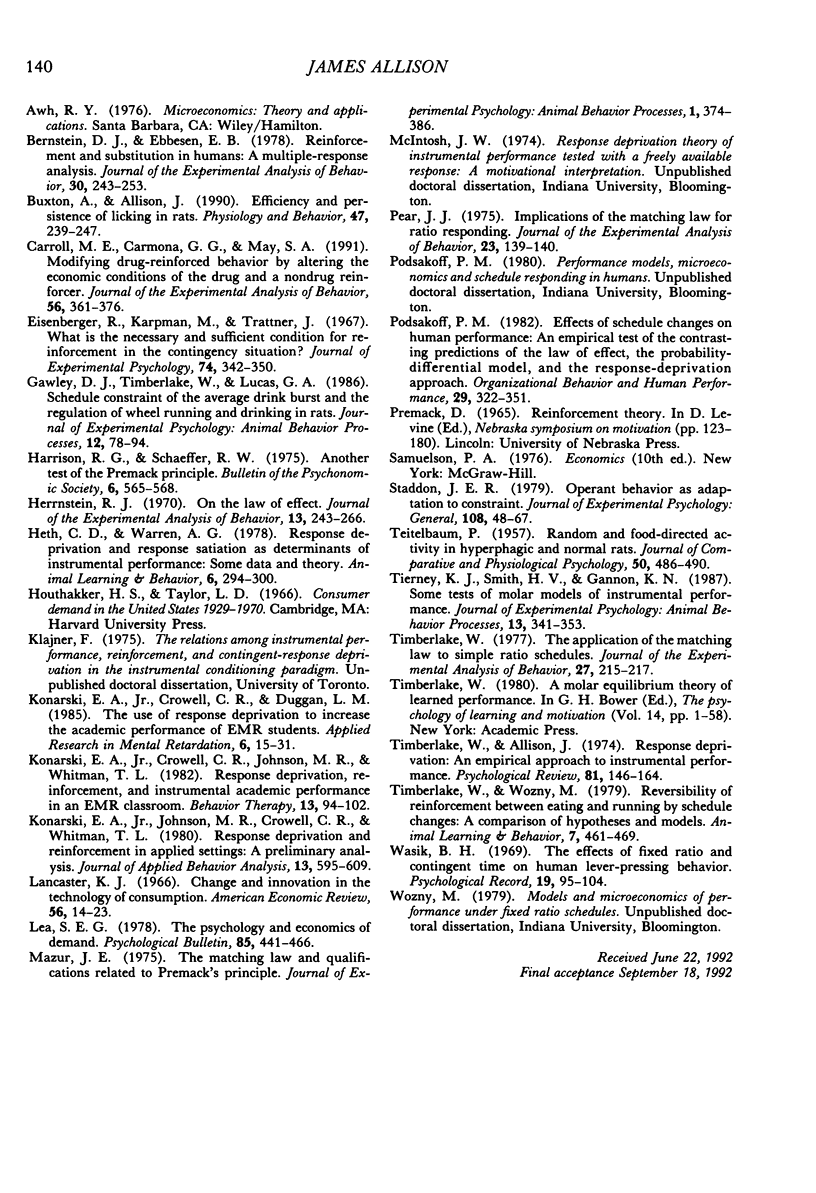
Selected References
These references are in PubMed. This may not be the complete list of references from this article.
- ALLISON J. STRENGTH OF PREFERENCE FOR FOOD, MAGNITUDE OF FOOD REWARD, AND PERFORMANCE IN INSTRUMENTAL CONDITIONING. J Comp Physiol Psychol. 1964 Apr;57:217–223. doi: 10.1037/h0048402. [DOI] [PubMed] [Google Scholar]
- Aeschleman S. R., Williams M. L. A test of the response deprivation hypothesis in a multiple-response context. Am J Ment Retard. 1989 Jan;93(4):345–353. [PubMed] [Google Scholar]
- Allison J., Buxton A. Multidimensional aspects of drinking in the rat. Physiol Behav. 1992 Feb;51(2):267–275. doi: 10.1016/0031-9384(92)90140-w. [DOI] [PubMed] [Google Scholar]
- Allison J. Contrast, induction, facilitation, suppression, and conservation. J Exp Anal Behav. 1976 Mar;25(2):185–198. doi: 10.1901/jeab.1976.25-185. [DOI] [PMC free article] [PubMed] [Google Scholar]
- Allison J., Moore K. E., Gawley D. J., Mondloch C. J., Mondloch M. V. The temporal pattern of unconstrained drinking: Rats' responses to inversion and identity constraints. J Exp Anal Behav. 1986 Jan;45(1):5–13. doi: 10.1901/jeab.1986.45-5. [DOI] [PMC free article] [PubMed] [Google Scholar]
- Allison J., Moore K. E. Lick-trading by rats: on the substitutability of dry, water, and saccharin tubes. J Exp Anal Behav. 1985 Mar;43(2):195–213. doi: 10.1901/jeab.1985.43-195. [DOI] [PMC free article] [PubMed] [Google Scholar]
- Allison J. Paired baseline performance as a behavioral ideal. J Exp Anal Behav. 1981 May;35(3):355–366. doi: 10.1901/jeab.1981.35-355. [DOI] [PMC free article] [PubMed] [Google Scholar]
- Bernstein D. J., Ebbesen E. B. Reinforcement and substitution in humans: a multiple-response analysis. J Exp Anal Behav. 1978 Nov;30(3):243–253. doi: 10.1901/jeab.1978.30-243. [DOI] [PMC free article] [PubMed] [Google Scholar]
- Buxton A., Allison J. Efficiency and persistence of licking in rats. Physiol Behav. 1990 Feb;47(2):239–247. doi: 10.1016/0031-9384(90)90137-s. [DOI] [PubMed] [Google Scholar]
- Carroll M. E., Carmona G. G., May S. A. Modifying drug-reinforced behavior by altering the economic conditions of the drug and a nondrug reinforcer. J Exp Anal Behav. 1991 Sep;56(2):361–376. doi: 10.1901/jeab.1991.56-361. [DOI] [PMC free article] [PubMed] [Google Scholar]
- Eisenberger R., Karpman M., Trattner J. What is the necessary and sufficient condition for reinforcement in the contingency situation? J Exp Psychol. 1967 Jul;74(3):342–350. doi: 10.1037/h0024719. [DOI] [PubMed] [Google Scholar]
- Gawley D. J., Timberlake W., Lucas G. A. Schedule constraint on the average drink burst and the regulation of wheel running and drinking in rats. J Exp Psychol Anim Behav Process. 1986 Jan;12(1):78–94. [PubMed] [Google Scholar]
- Herrnstein R. J. On the law of effect. J Exp Anal Behav. 1970 Mar;13(2):243–266. doi: 10.1901/jeab.1970.13-243. [DOI] [PMC free article] [PubMed] [Google Scholar]
- Konarski E. A., Johnson M. R., Crowell C. R., Whitman T. L. Response deprivation and reinforcement in applied settings: A preliminary analysis. J Appl Behav Anal. 1980 Winter;13(4):595–609. doi: 10.1901/jaba.1980.13-595. [DOI] [PMC free article] [PubMed] [Google Scholar]
- Konarski E. A., Jr, Crowell C. R., Duggan L. M. The use of response deprivation to increase the academic performance of EMR students. Appl Res Ment Retard. 1985;6(1):15–31. doi: 10.1016/s0270-3092(85)80019-9. [DOI] [PubMed] [Google Scholar]
- Menter P., Harrison W., Woodlin W. G. Patch testing of coolant fractions. J Occup Med. 1975 Sep;17(9):565–568. [PubMed] [Google Scholar]
- Pear J. J. Implications of the matching law for ratio responding. J Exp Anal Behav. 1975 Jan;23(1):139–140. doi: 10.1901/jeab.1975.23-139. [DOI] [PMC free article] [PubMed] [Google Scholar]
- TEITELBAUM P. Random and food-directed activity in hyperphagic and normal rats. J Comp Physiol Psychol. 1957 Oct;50(5):486–490. doi: 10.1037/h0048419. [DOI] [PubMed] [Google Scholar]
- Timberlake W. The application of the matching law to simple ratio schedules. J Exp Anal Behav. 1977 Jan;27(1):215–217. doi: 10.1901/jeab.1977.27-215. [DOI] [PMC free article] [PubMed] [Google Scholar]


